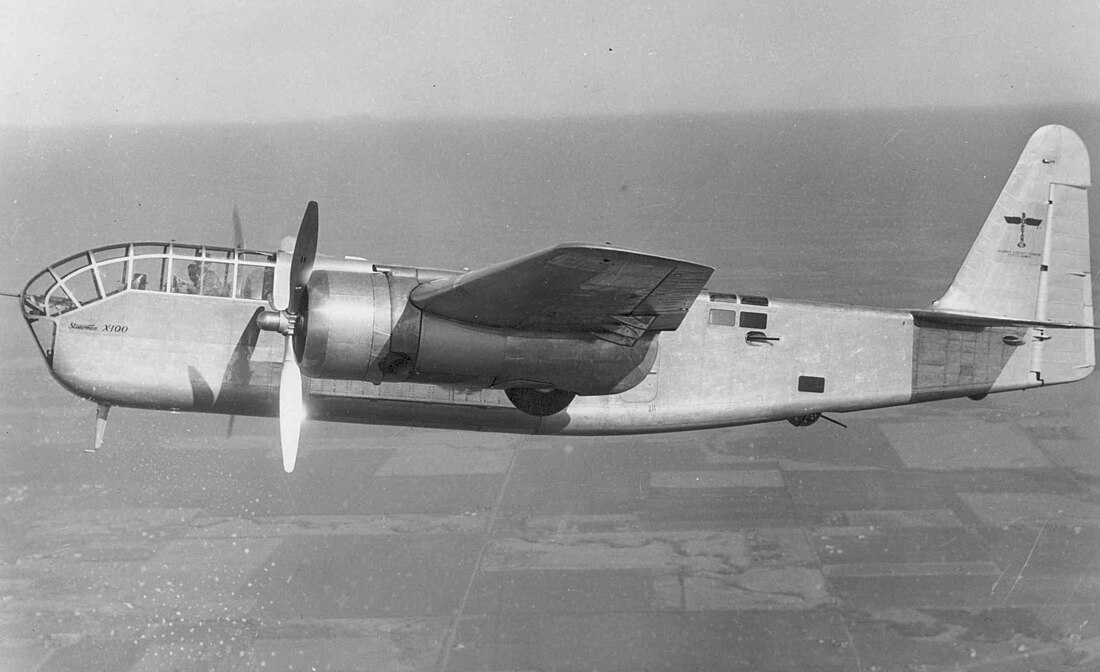Stearman XA-21
Attack aircraft prototype by Stearman From Wikipedia, the free encyclopedia
The Stearman XA-21 (Model X-100) was a competitor in a United States Army Air Corps competition for a twin-engined attack aircraft which (after redesigns) led to the Douglas A-20 Havoc, Martin A-22 Maryland and North American B-25 Mitchell.
| XA-21 | |
|---|---|
 Stearman XA-21 with streamlined cockpit | |
| General information | |
| Type | Ground attack |
| National origin | United States |
| Manufacturer | Stearman Aircraft |
| Status | Prototype |
| Primary user | United States Army Air Corps |
| Number built | 1 |
| History | |
| First flight | 1938 |
Design and development
The X-100, designated XA-21 following purchase by the Army Air Corps, was a twin-engined high-winged monoplane of all-metal construction.[1] Its initial design featured an unusual "stepless cockpit" arrangement, much like those on most German World War II bombers designed during the war years from the He 111P onwards, with a streamlined, well-framed greenhouse canopy enclosing both the pilot and bombardier stations.[2]
Operational history
The XA-21 was first tested with the streamlined cockpit but this configuration was found to restrict the pilot's forward vision, and the aircraft was rebuilt with a conventional (stepped) nose and cockpit structure.[3] Although this change in the cockpit did not significantly affect performance, the XA-21 was not ordered into production.'[4] The sole XA-21 had serial number 40-191.[5]
Operators
Specifications (XA-21)


Data from Museum of the United States Air Force[4]
General characteristics
- Crew: 3
- Capacity: 5,560 lb (2,520 kg)
- Length: 53 ft 1 in (16.18 m)
- Wingspan: 65 ft 0 in (19.81 m)
- Height: 14 ft 2 in (4.32 m)
- Wing area: 607 sq ft (56.39 m2)
- Empty weight: 12,760 lb (5,789 kg)
- Gross weight: 18,230 lb (8,269 kg)
- Powerplant: 2 × Pratt & Whitney R-2180-7 Twin Hornet radial engines, 1,400 hp (1,030 kW) each
Performance
- Maximum speed: 223 kn (257 mph, 414 km/h)
- Cruise speed: 174 kn (200 mph, 322 km/h)
- Wing loading: 30.0 lb/sq ft (147 kg/m2)
- Power/mass: 0.15 hp/b (250 W/kg)
Armament
- Guns: ** 4 × wing-mounted 0.30 in (7.6 mm) M1919 Browning machine guns
- 1 × nose-mounted 0.30 in (7.6 mm) in machine gun
- 4 × aft-firing 0.30 in (7.6 mm) in machine guns
- Bombs: 2,700 lb (1,200 kg)
See also
Related lists
References
External links
Wikiwand - on
Seamless Wikipedia browsing. On steroids.
